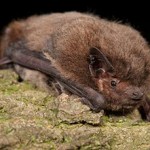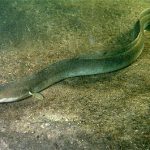Five Irish species at risk in the ‘sixth mass extinction’
July 21st, 2017
There was widespread media coverage last week as scientists warned that a sixth mass extinction is underway due to a “biological annihilation” of wildlife in recent decades.
According to the new study, human overpopulation and overconsumption are driving the loss of species and ecosystems around the world. And Ireland is no exception to this.
While the survival struggles of some Irish species are better known than others –any schoolchild can tell you about the decline of the native red squirrel – many lesser-known Irish species are also in drastic need of protection and conservation.
Here are just a few of them:
Corncrake
The corncrake can be recognised by the distinctive call of the male of the species, described by BirdWatch Ireland as a “kerrx-kerrx sound” compared with the sound of “two cheese-graters” being rubbed together. Once a common summer visitor, corncrakes have experienced huge population declines this century and are at risk of global extinction.
They are now only present in small numbers in the Shannon Callows, north Donegal and western parts of Mayo and Connaught. During summer months, the corncrake nests on the ground in areas of tall vegetation, such as hay fields.
Population decline has largely been linked to intensive farming practices that have destroyed nests and driven corncrakes from old habitats. The National Parks and Wildlife Service (NPWS) and BirdWatch Ireland have operated corncrake conservation schemes since the early 1990s.
Bats
 There are over 1,200 identified species of bat in the world, nine of which have been confirmed resident in Ireland. Bats are strictly protected under EU and Irish law as some bat species have declined or become extinct across much of Europe. It is an offence to intentionally disturb, injure or kill a bat or interfere with its resting place.
There are over 1,200 identified species of bat in the world, nine of which have been confirmed resident in Ireland. Bats are strictly protected under EU and Irish law as some bat species have declined or become extinct across much of Europe. It is an offence to intentionally disturb, injure or kill a bat or interfere with its resting place.
Since 2003, Bat Conservation Ireland has found that population figures for most Irish bat species appear to be stable or increasing, possibly as a result of improved protection or increased woodland cover.
However, they warn that this growth follows from considerable decline in previous centuries and that Irish bats remain vulnerable to threats such as water pollution, increased artificial night lighting, habitat and hedgerow loss, and pesticides.
Natterjack toad
 The natterjack toad, one of only three native amphibian species in Ireland, is an elusive creature. They are nocturnal, sheltering in burrows and under logs and stones during the day, and are mostly confined to a handful of coastal sites in Kerry.
The natterjack toad, one of only three native amphibian species in Ireland, is an elusive creature. They are nocturnal, sheltering in burrows and under logs and stones during the day, and are mostly confined to a handful of coastal sites in Kerry.
These toads are listed as endangered on the Irish Red List of Amphibians, Reptiles and Freshwater Fish. According to the Herpetological Society of Ireland, the natterjack toad has very specific habitat requirements for breeding, requiring a shallow water-body, with a gentle slope, and minimal vegetation.
Land drainage, agricultural intensification, and overgrazing of habitats around ponds have all contributed to the loss and deterioration of these habitats, driving declines in population and distribution.
Bees
 There are roughly 20,000 species of bee in the world and 98 of these can be found in Ireland. These species represent a huge variety of sizes, colours and behaviours, from the solitary osmia aurulenta species which nests in empty snail shells to the native Irish honeybee which lives in hives containing up to 80,000 bees. Unfortunately, one-third of Irish bee species are threatened with extinction.
There are roughly 20,000 species of bee in the world and 98 of these can be found in Ireland. These species represent a huge variety of sizes, colours and behaviours, from the solitary osmia aurulenta species which nests in empty snail shells to the native Irish honeybee which lives in hives containing up to 80,000 bees. Unfortunately, one-third of Irish bee species are threatened with extinction.
According to the National Biodiversity Data Centre, a number of pressures are causing this, including habitat loss and degradation due to intensive farming, forestry and urban and industrial land development. Other factors, such as climate change, the use of pesticides, and introduced pests and diseases, have also contributed.
The All-Ireland Pollinator Plan 2015-2020 is a national strategy aimed at combating this problem and making farmland, public land and private land more pollinator friendly.
European eel
 European eels are common in coastal and fresh waters around Ireland, where they bury themselves in the water floor during the day and hunt at dusk for invertebrates and fish. It is a critically endangered species due to a dramatic pan-European decline in population numbers since the 1970s.
European eels are common in coastal and fresh waters around Ireland, where they bury themselves in the water floor during the day and hunt at dusk for invertebrates and fish. It is a critically endangered species due to a dramatic pan-European decline in population numbers since the 1970s.
Causes of this decline include climate change and a shift in ocean currents, overfishing, freshwater habitat loss, death in hydropower plants, disease and parasites, and pollution. Ireland is considered a stronghold for the European eel within the EU and has adopted a number of actions targeted at reducing eel mortality, including a ban on commercial fishing.
[x_author title=”About the Author”]








